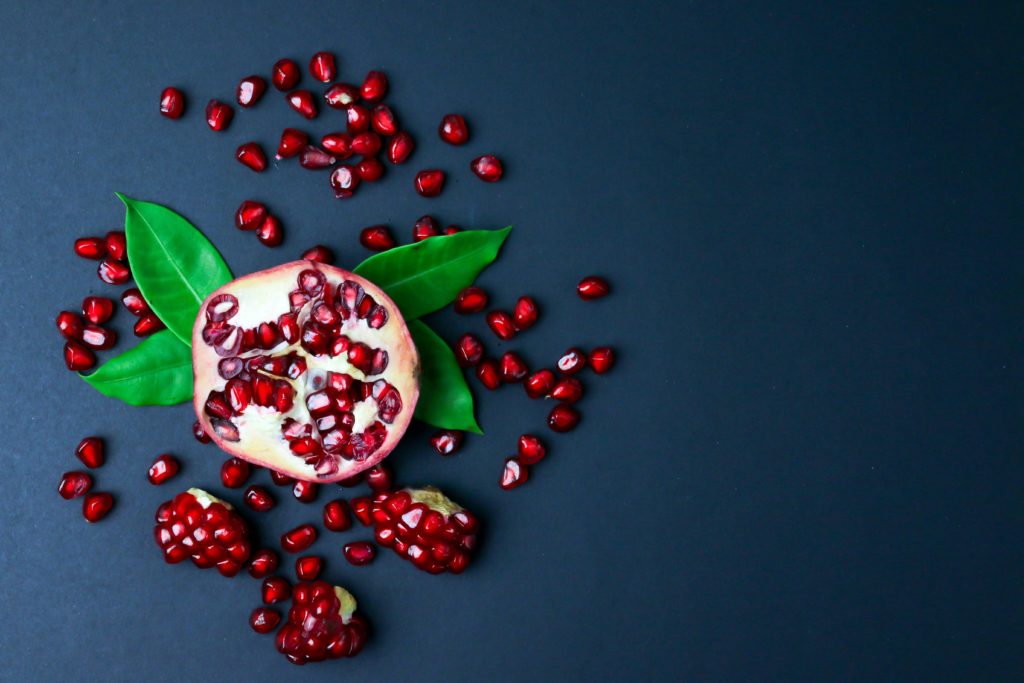
Harvesting Good

Harvesting Good


Pomegranate is the king of fruits and are known to be the fruit of paradise and is also mentioned in the Quran and bible. Its also one of the oldest fruits, and is highly nutritious. They are low in calories and fat but high in fiber, vitamins and minerals; and being rich in antioxidants and simultaneously a heart healthy fruit. It also promotes digestive health.

Pomegranates (Punica granatum) are a round beautiful red fruit having leathery rind with ruby beads like seeds nestled inside, called arils. Its juice would provide less fiber or vitamin C relative to the fruit as a whole.
In most places, they are deciduous with the exception of warmer climates, where they may be evergreen. They are also ornamental with shiny leaves and scarlet red flower. These plants are native to middle-east.
Below you will find the information and certain guidelines in regards to pomegranate cultivation and produce.

Land is the foremost consideration for growing anything, let alone pomegranates. Land for growing pomegranates needs to be chosen wisely.


Water is life and hence an essential component of any plant. However different plants have varying amount of water requirements.
Drip irrigation recommended for sloppy soils and sprinklers otherwise. Avoid uneven amount of watering and over irrigation. Water twice a week for the first year for light soil and once a week for clay soil. Soaking the entire root system is essential, as water needs to reach deep into the root system.



Pomegranate trees appreciate cool winters and dry, hot summers. They thrive when growing season temperatures are 85o F or 29o C. Temperature below 12o C are not advised.

They should be planted when last frost has passed and the temperatures begin to rise. Slightly alkaline soil (pH value of up to 7.5) is perfect for planting pomegranate trees. To remedy a neutral soil, a small amount of limestone can be added.
Trees should be planted as far as 20 feet, for large scale farm. Wonderful variety of pomegranate is mainly planted, whereas, angel red variety is also great for pomegranate juice.
The plants should be positioned in the planting hole such that the top most roots are at the soil line and the hole is twice as wide as the root. plant with some aged compost for added nutrients.
Pomegranates are self-fruitful but cross pollination among pomegranate trees can increase yield.
Sunflower and Lavender are good companion plants for pomegranate, unlike corn and potatoes.
To ensure best quality of fruit, it is often grown from cuttings and to get the same tree as the parent tree. Growing a pomegranate tree from cuttings require a hardwood cutting of around 10 inches, taken at appropriate time, such as late winter from at least a year old tree that is at least half an inch in thickness or diameter. Arrange the soil level as such that the top node of the cutting remains above the soil.

Balanced organic fertilizers should be used in March and November for the first two years and after that not much fertilizers are required.
Nutrients such as magnesium, zinc, manganese, boron and copper are vital for plant growth.
You can apply 1 pound 10-10-10 organic fertilizer in late winter and early summer when plant is young and increasing the amount of fertilizer until mature plants receive 3 pounds of 10-10-10 twice a year.



Pomegranates are prone to producing suckers, which needs to be removed, so the tree can focus on producing healthy fruit. Regular pruning helps attain a good form for the tree, pruning particularly in first few years of the tree will promote new shoot development and more abundant harvest. Prune pomegranate in winter.
When a tree is a year old, pick one of the six of seven branches and prune the rest to the ground, to make a tree shape. It also helps the tree to produce fruit faster and is easier to maintain, and also aids in speedy recovery from damages like frost.
After the tree is established, it may be enough to restrict pruning to dead or damaged branches.
Propagation is usually done through hardwood cuttings taken in winter, as those grown from seed may not stay true to their type in all essence.
Add layer of aged compost or aged manure mulch around the base of the plants in spring, and mulch extending to drip line.
Pomegranates are one of the most secure fruits in regards to pests and diseases, particularly in well maintained trees. But there are some flies like pomegranate butterfly, whiteflies and some diseases that could cause leaf spot, fruit spot, heart rot and soft or dry rot, etc.

Start with good research and knowledge of your surrounding land and weather conditions and access to water. And pursuing plantation with caution and patience and using organic and natural methods for best production. Rest is with God.